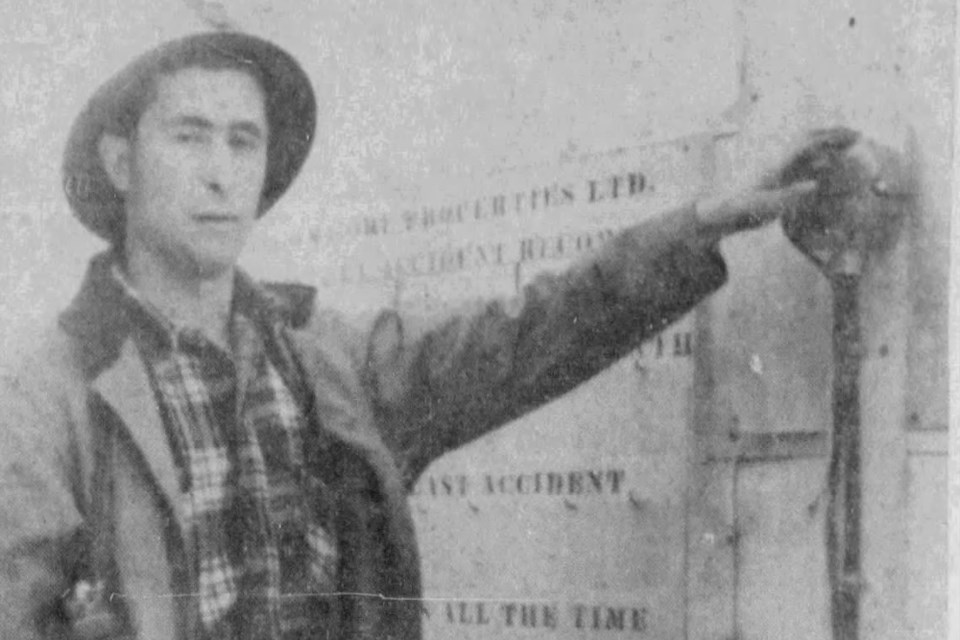Some men gain recognition for building their communities. Some get notoriety from destroying things. Attilio Berdusco got to do both; in the best possible way.
Attilio (or Tillio as he was often called), was born in the Sault in 1929 to Reno and Pauline Berdusco and was the oldest of eight children.
The family lived at the Parkhill Mine until 1939. When the gold mines closed, Tillio’s father then sought work at the Sinter Plant in Wawa while his mother ran a general store at the corner of Broadway and Laurier in Wawa. Attilio’s name appears in the Sault Star regularly in childhood as he excelled at both sports and academics.
He finished high school in Sault Ste. Marie at Sault Collegiate in 1948 and upon graduation received a prestigious scholarship from none other than Sir James Dunn, the President of Algoma Steel Corporation. Tillio was one of two recipients of a four-year scholarship to Michigan College of Mining and Technology. Beneficiaries of these prizes not only had to have excellent grades but also had to pass a special exam to prove their competence.
Valued at $2,400 in 1948, these scholarships were a significant investment, and Attilio did not disappoint.
Not only did Attilio graduate with his Bachelor of Science in Mining Engineering in 1952, but he also went on to work for Algoma Ore at the Helen Mine where he orchestrated the largest controlled underground explosion up to that point in a Canadian mine. The blast took at least 18 months to carry out and involved the drilling of 2,437 blast holes, wired to 153 tons of dynamite.
On Sept. 24, 1955, Tillio flicked the switch to initiate the blast, which unearthed a million tons of rock.
As the Sault Star reported, “Probably the most relieved man to see everything go according to plan was young, 25-year-old, Tillio Berdusco. Tillio, who almost literally lived on a keg of dynamite for more than a year, was responsible for laying out the blasting holes, for the groundwork in calculating the charge necessary to move over a million tons of iron ore, and finally for the loading of the holes.”
As is often the case, without risk there is no reward. Mr. Berdusco’s reward was the satisfaction of a job well done and much applauded in the newspapers and in the mining world.
The lead-up to the explosion would have been extremely stressful. Not only was he working with an enormous amount of dynamite, which was putting everyone in and around the mine at risk, but being given such a high level of responsibility could make or break his career. The dynamite itself had required a whopping ten freight cars to transport it to the mine and once the loading of the drilled holes started, smoking had been forbidden in the mine as a precaution. In addition, once the blasting caps were in place, all workers were required to leave the mine during electrical storms.
The Sault Star described on Sept. 27 1955 that, “not one window was smashed in the history-making blast.”
Houses at the mine were evacuated as a precaution with most families heading into town for a day of shopping. Everything went according to plan, with no damage reported.
The Sault Star expressed that, “People in Wawa, 2 ½ miles from the mine, said that if it had not been for the huge column of smoke and dust they would hardly have known that the blast had been set off.”
In addition to this accomplishment, he devoted his entire career to Algoma Steel and worked his way up to a senior management position (Corporate Manager Raw Materials, Purchasing, and Traffic). He also held a stunning array of important positions in his community. While in Wawa, he was Chairman of the Michipicoten District Separate School Board, a Town Councillor, served on the police commission, helped to build St. Monica’s Parish Church, and was one of the designers of the Michipicoten Golf Course.
When he moved to Sault Ste. Marie, he was a Director of the Canadian Bushplane Heritage Centre and the United Way and was a Third Degree Knight with the Knights of Columbus.
Attilio was inducted into the Academy of Geological and Mining Engineers and Scientists at Michigan Technological University in September 2006. Unfortunately, he passed away in January 2007.
He is further honoured to this day with a beautifully handpainted door in Wawa – part of the Wawa Heritage Door project.
It is quite fitting that he gained fame and recognition from successfully executing a mammoth pillar blast, as he was also a pillar of his community.
